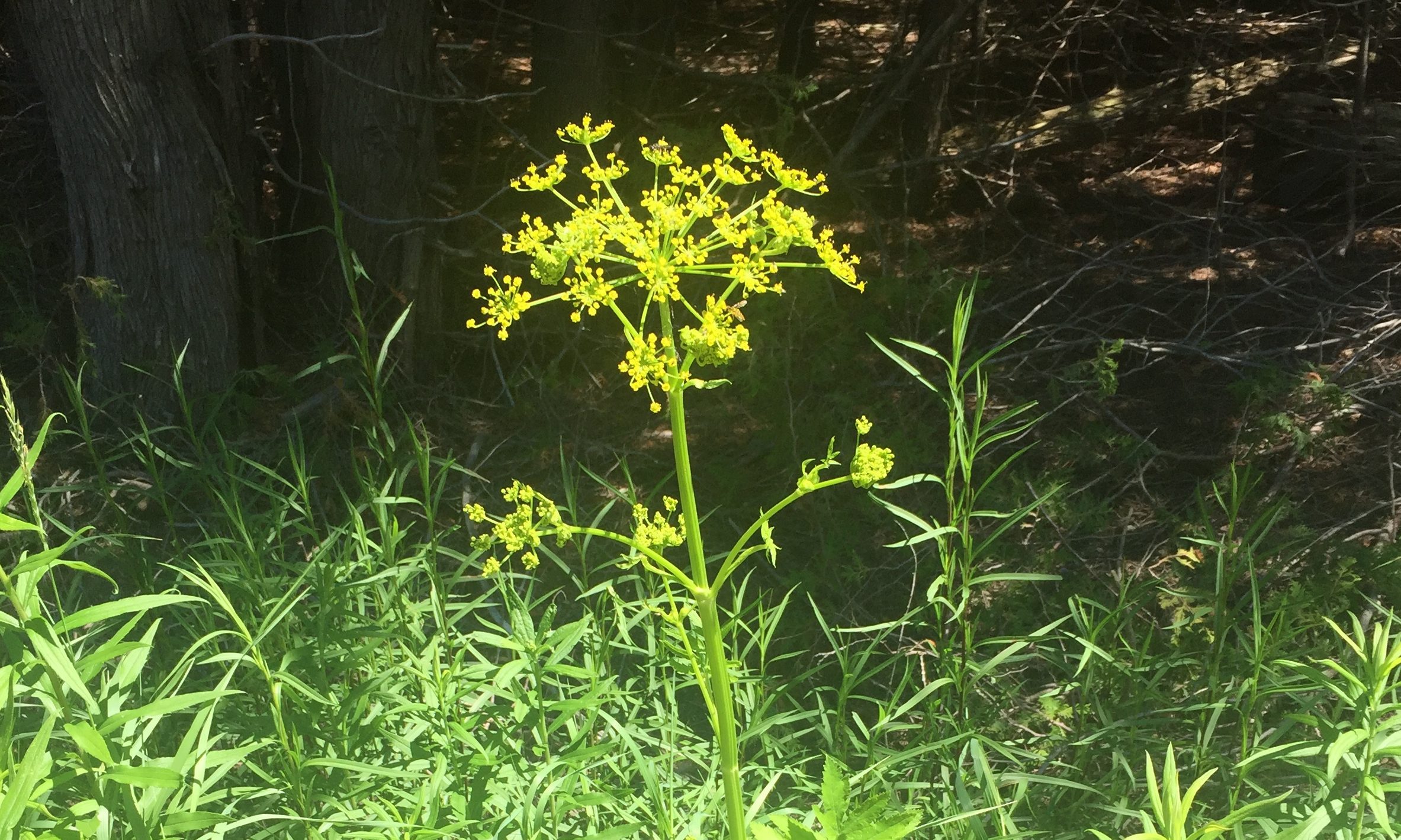Most folks will know Parsnip as a tasty addition to the dinner table.
Indeed, Parsnip is a member of the Apaiaceae family and so it is related to other friendly items such as Carrot, Caraway, Dill, Cumin, and Parsley. The Parnsip was imported to North America from Europe a long time ago. When we find Parsnip at the Farmer’s Market or grocery store, it is in it’s root form, ready for the table. But, when you find parsnip growing on your property, is it safe to eat? The answer is yes and no.
Let me explain why Parsnip is a friend and foe with a real-life story of something that happened at a field site last week.
Premier is completing environmental approvals for a bridge replacement within the upper Grand River watershed. We were out at the bridge crossing in May and completed an inventory of the plants in close proximity to the bridge. We were back at the bridge early last week, and as we were walking down the road toward the bridge, I noticed some Wild Parsnip (Pastinaca sativa), growing in the roadside ditch outside of my study area. It was growing in disturbed soil from an excavation where a utility company recently removed wires that were going to be affected by the bridge replacement.
I grabbed my trusty spade shovel and dug out all 25 or so Wild Parsnip plants (leaves and root) and placed them on the gravel road to dry out. Why did I do this? For two reasons, really:
- If someone was to come along and pull out the plant, to harvest the root, it is very likely the plant would burn their skin. *It is important to note the burns caused by contact with Wild Parsnip cause permanent damage when they come in contact with skin; and
- I wanted the plant to dry out, so it would not produce seeds and spread beyond the utility excavation.
I am including two pictures of Wild Parnsip from our site, to help you identify it.
(Left photo: View of second year Wild Parsnip with yellow flower; Right photo: View of first year Wild Parsnip with no flowers)


As noted, Wild Parsnip demonstrates a showy yellow flower and looks a lot like another non-native plant: Cow Parsnip (Heracleum maximum) that has a showy white flower. Both plants can cause severe burns to the skin. A third plant that looks like Parsnip that is in the same family and can also cause skin burns is called Giant Hogweed (Heracleum mantegazzianum). You can also visit the following Ontario government webpage for additional information on these three dangerous plants!
http://www.invadingspecies.com/invaders/plants-terrestrial/wild-parsnip/
In summary, Parsnip is a friendly addition to the dinner table but should be approached with extreme caution and eradicated if it turns up on your land.






